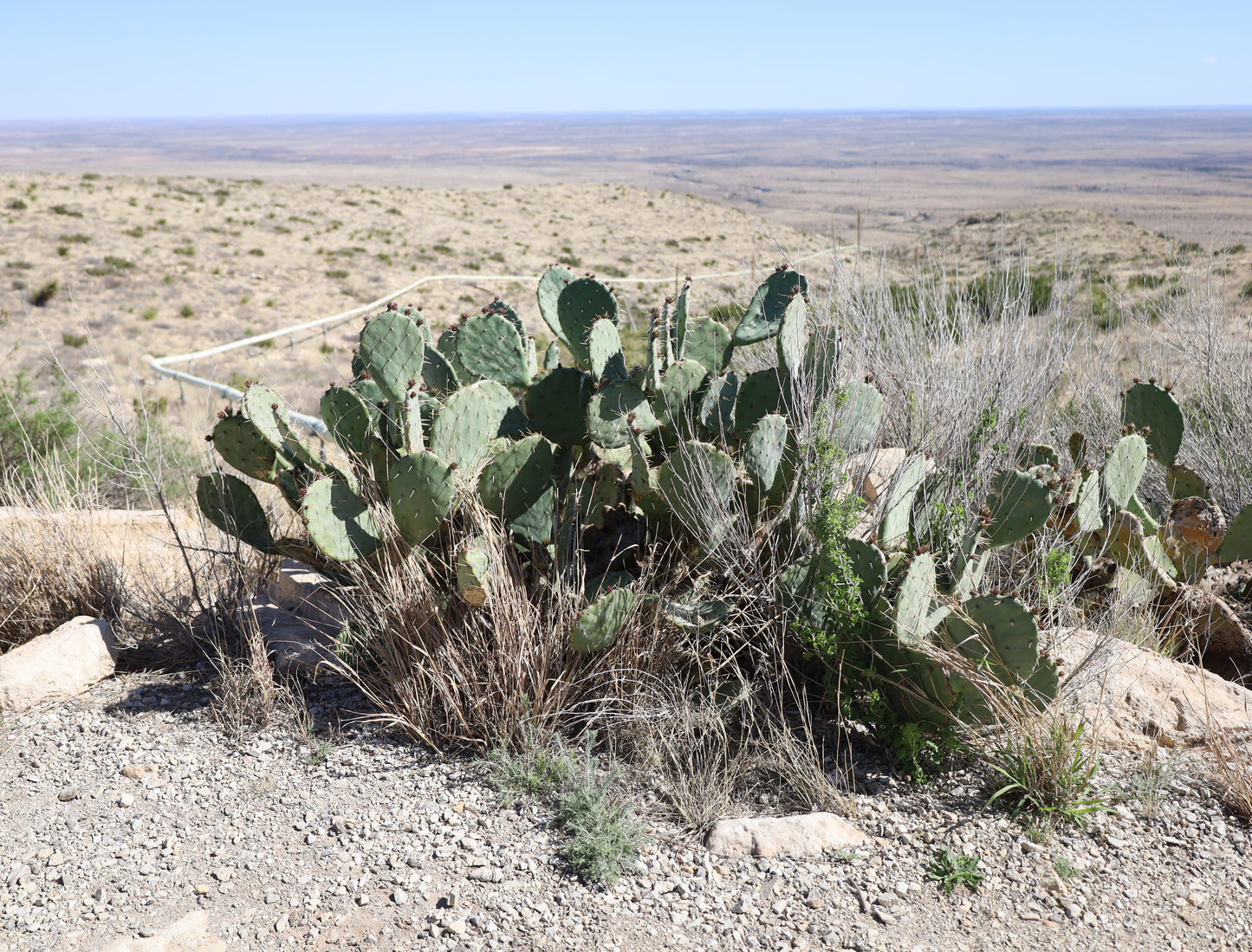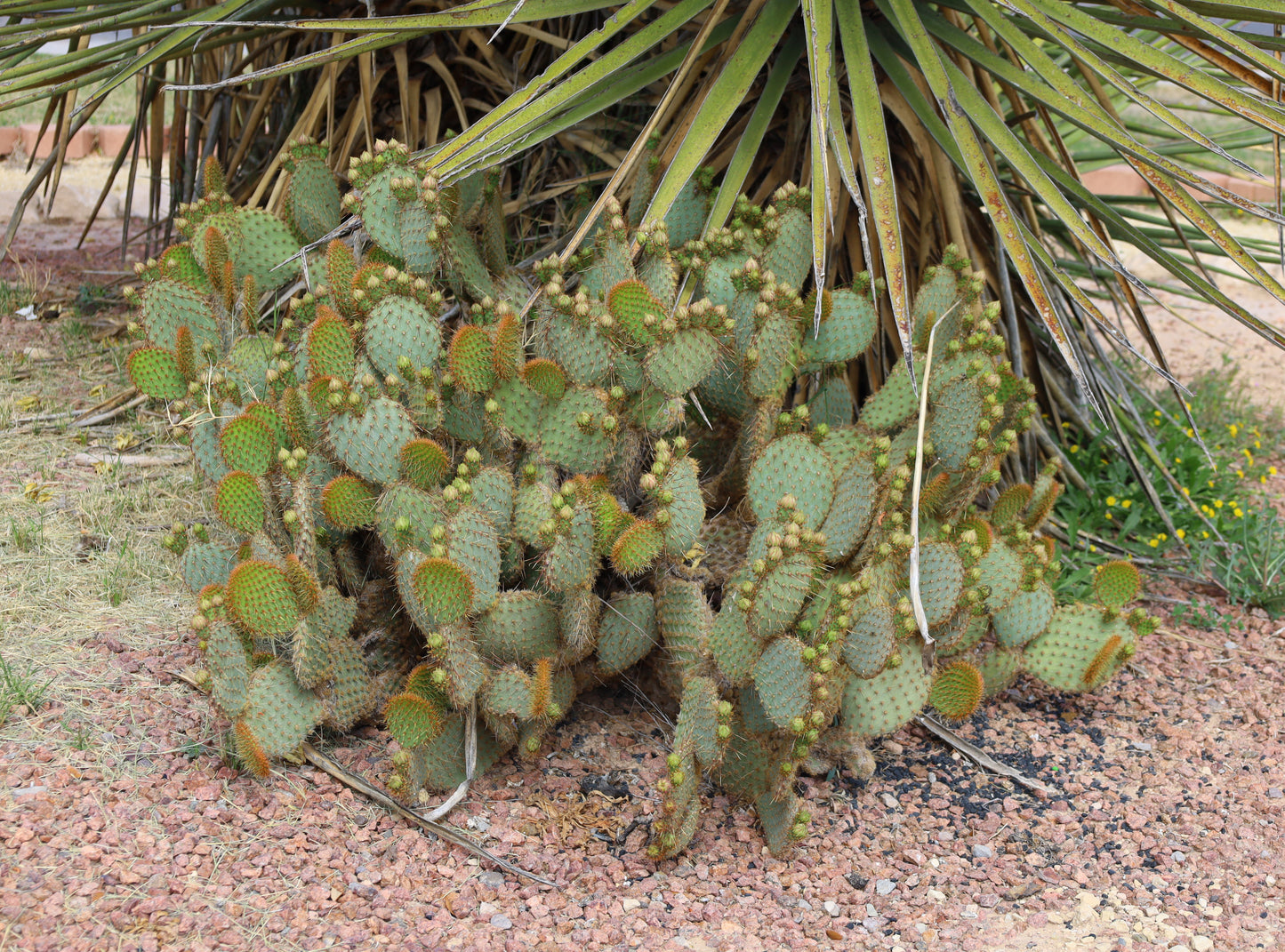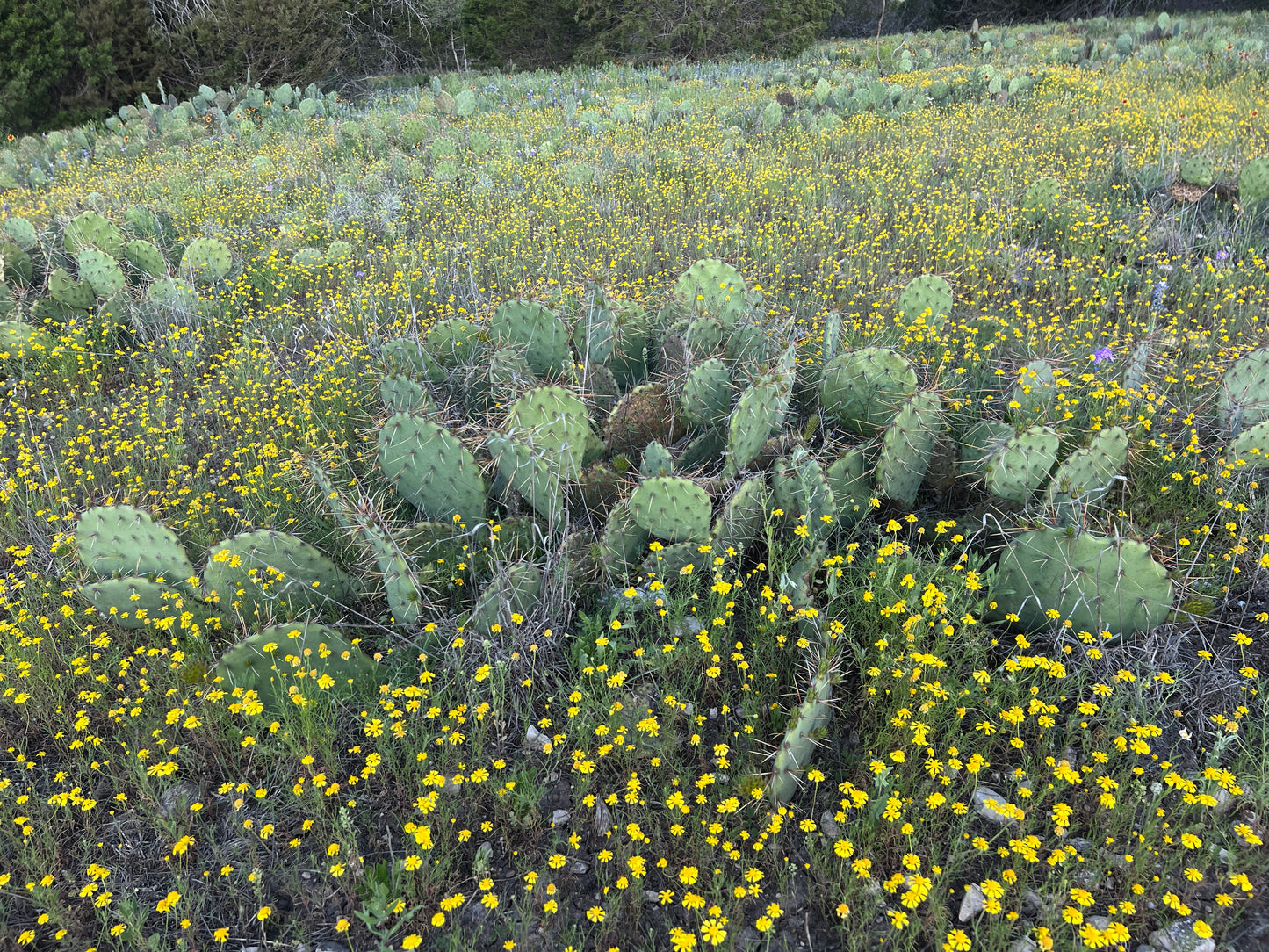Floridaseeds
Texas Prickly Pear Opuntia engelmannii 100 Seeds USA Company
Texas Prickly Pear Opuntia engelmannii 100 Seeds USA Company
Couldn't load pickup availability
Opuntia engelmannii, commonly known as Engelmann's prickly pear, is a species of cactus native to the southwestern United States and northern Mexico. Here is a detailed description of this plant:
General Description
Growth Habit: Opuntia engelmannii typically grows as a sprawling, bushy cactus. It can form dense, shrubby clumps.
Size: The cactus can reach heights of 3 to 5 feet (1 to 1.5 meters) and can spread up to 10 feet (3 meters) wide.
Pads (Cladodes)
Shape: The pads are flattened and oval to oblong in shape.
Size: Each pad can be up to 12 inches (30 cm) long and 7 inches (18 cm) wide.
Color: The pads are blue-green to gray-green and are covered with fine hairs and numerous areoles (small bumps where spines and glochids emerge).
Spines and Glochids
Spines: The spines are long, sharp, and can vary in color from white to yellowish to reddish-brown. Each areole may have one to several spines that can be up to 3 inches (7.5 cm) long.
Glochids: In addition to spines, the areoles contain numerous tiny, barbed glochids that can easily detach and stick to skin.
Flowers
Color: The flowers are bright yellow, sometimes with reddish centers.
Size: Each flower is about 3 to 4 inches (7.5 to 10 cm) in diameter.
Blooming Season: Flowers typically bloom in late spring to early summer.
Fruits
Appearance: The fruit is a fleshy, pear-shaped berry known as a "tuna." It turns from green to reddish-purple as it matures.
Size: The fruit is about 2 to 3 inches (5 to 7.5 cm) long.
Edibility: The fruit is edible and sweet, often used in jellies, candies, and beverages.
Habitat and Distribution
Native Range: Opuntia engelmannii is found in the southwestern United States, including Texas, Arizona, New Mexico, and California, and in northern Mexico.
Preferred Habitat: It thrives in arid and semi-arid environments, such as deserts, grasslands, and scrublands. It prefers well-drained sandy or rocky soils and can often be found on slopes and plains.
Ecological Role
Pollinators: The flowers attract a variety of pollinators, including bees, butterflies, and hummingbirds.
Wildlife: The pads and fruits provide food and moisture for desert animals such as deer, javelinas, rabbits, and various rodents.
Adaptations
Drought Tolerance: Opuntia engelmannii is highly adapted to dry conditions. Its thick, waxy pads help conserve water, and its deep root system allows it to access moisture from deeper soil layers.
Protection: The spines and glochids deter herbivores from feeding on the cactus.
Uses
Culinary: The fruits (tunas) are harvested for their sweet flesh and are used in various culinary applications. The pads (nopales) can also be eaten when young and tender, typically cooked as a vegetable.
Ornamental: Due to its striking appearance and flowers, it is often used in xeriscaping and desert landscaping.
Growing Instructions for the Texas Prickly Pear
1. The seeds like sandy, well-drained soil. Fill a pot with moist cactus mix or used a mixture of sand and peat moss, perlite or vermiculite. Use a pot that has drainage holes in the bottom. 2. Sow the seeds on the surface of the soil. 3. Cover the seeds with a thin layer of soil. 3. Water the soil with a mister or by placing the pot in a saucer of water. The soil will absorb the water. 4. Place the pots in an area with warm temperatures in indirect sun or part shade. The seeds germinate in a few days. Do not overwater the plants. 5. When the seedlings are a few inches tall, they can be transplanted.
Materials
Materials
Shipping & Returns
Shipping & Returns
Dimensions
Dimensions
Care Instructions
Care Instructions
Share
















